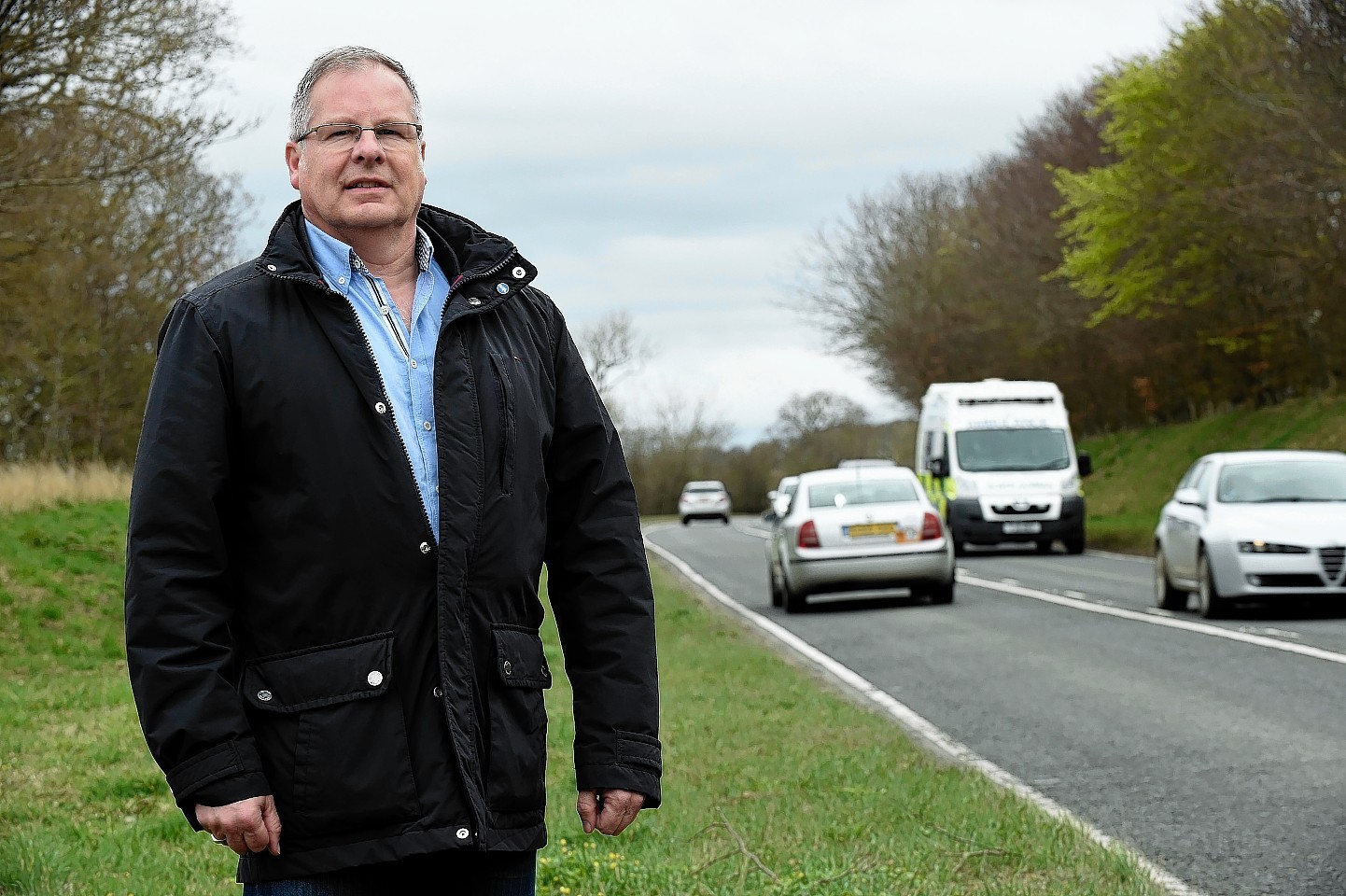Farmers are urging council roads bosses to increase the number of laybys and passing places on a notorious Aberdeenshire road.
A new report has revealed that driver frustration at being caught behind HGVs and farm traffic is a contributory factor to the fatal and serious crashes which plague the A947 Aberdeen to Banff road.
In the past seven years 12 people have died on the route, with dozens more seriously injured.
Now farmers are calling for more stopping places and for existing ones to be increased in size along the 41-mile route, which has been dubbed “the road of death”.
All 19 laybys on the A947 Aberdeen to Banff road fail to meet national standards for trunk roads.
The road was measured against the Design Manual for Roads and Bridges (DMRB), a 15-volume text which outlines standards for dual carriageways.
Although the A947 does not fall under this category of route, the report states that it could be classed as a wide single carriageway, with dualling a possibility in the future with increased traffic from the Aberdeen bypass.
The report, which will be discussed by Aberdeenshire Council’s infrastructure services committee next week, also identifies 42 sites where new laybys could be created or existing ones could be extended.
It states: “Slow-moving vehicles, such as Heavy Goods Vehicles (HGVs) and agricultural vehicles, and subsequent platoons that build up, are a major source of driver frustration on the A947 and contribute to safety concerns related to dangerous overtaking.
“Additionally, feedback from the farming industry suggests that existing laybys are not in appropriate locations and are not large enough and therefore are not used as much as they could be.”
The report will update councillors on the progress of the strategy and how it relates to wider transport improvements in the region.
Banff and District councillor John Cox has been a long-term campaigner for the road to be overhauled.
“The problem with the road is not just that it’s windy but also there are so many dips that HGVs and buses are having to drop down gears so often that it causes queues, which leads to frustration.
“People will say accidents are caused by drivers and that’s true, but anything that can be done to reduce those accidents is to be welcomed.”
The study comes two years after the A947 Road Improvement Strategy was launched with the aim of transforming the road over the next 20 years.
The strategy was launched after 98 accidents on the road between 2012-16, nine of which were fatal and 34 serious.
Margaret Dekker, of the Scottish Campaign against Irresponsible Driving (Scid), said that drivers themselves had to ensure they were responsible when using the road.
She said: “Obviously a major part of this is drivers getting frustrated.
“We have all got to be patient with traffic, lorries, cyclists, everyone else on the road.
“I’m sure we have all had that person who desperate to get past us, it’s only a few more minutes onto your journey, we all have a right to use the road safely.”
A list of 20 improvement options were drawn up as part of the strategy.
These included overtaking lanes, increasing police speed limit enforcement and building bypass roads around some communities in the area.
Many of the proposals for the route hinge on the outcomes of the nearby A96 dualling project and the City Region Deal.
It is also hoped the plans would radically improve journey times on the road.
Among the work that has been carried out so far are investigations into creating ghost islands at Whiterashes and Oldmeldrum junctions.
However the work on both has been halted due to the cost, which would be almost £3million for both projects combined.
But the council could review these works in the future as they could be affected by the A96 route choice.
As part of next week’s discussion, councillors have also been asked to approve the creation of a member officer working group, which would be a more formal version of the current strategy group.
